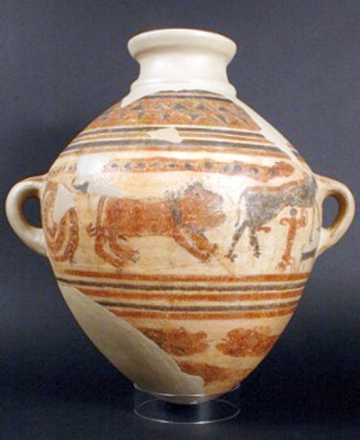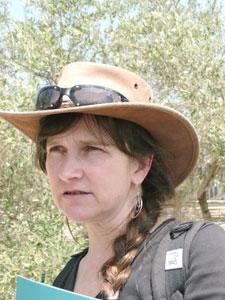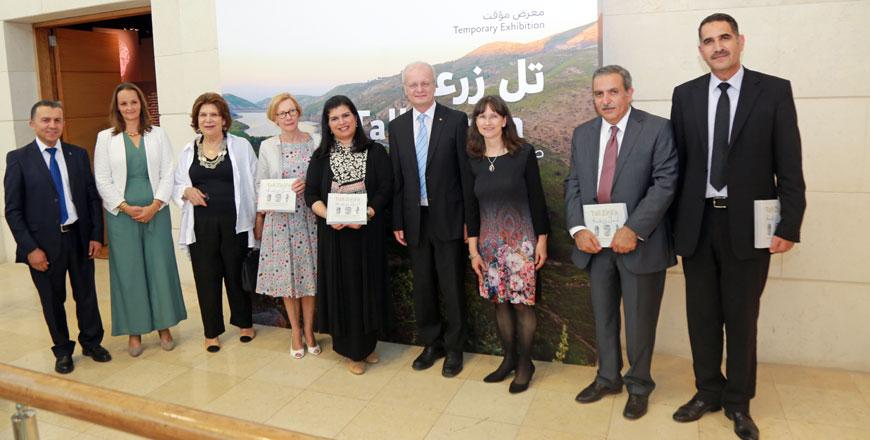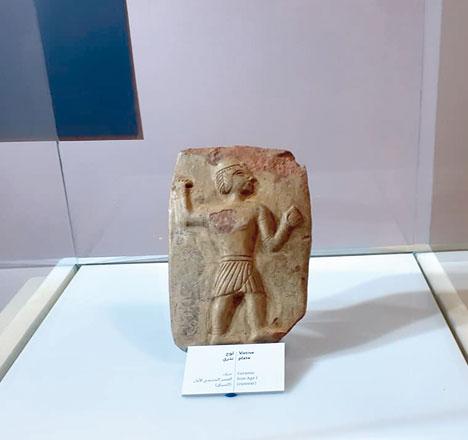You are here
Excavations from Tell Zira’a indicate presence of elite class — scholar
By Saeb Rawashdeh - Oct 20,2022 - Last updated at Oct 20,2022

Photo courtesy of GPIA
AMMAN — A number of objects have been excavated from Tell Zira’a (located around five kilometres southwest of ancient Gadara) by the German Protestant Institute of Archaeology (GPIA) and the Biblical Archaeological Institute Wuppertal, said Jutta Häser, a German archaeologist and former director of the GPAI in Amman.
The archaeologist’s remarks came during her presentation at 15th International Conference on the History and Archaeology of Jordan held at Yarmouk University in Irbid.
An almost unbroken continuity of the settlement’s occupation goes from the Early Bronze Age until the Ottoman Period, said Häser, adding that in addition to elaborate architectural features like city walls and temples, a number of prestige objects were excavated from the Bronze and Iron Age strata.
“Different objects can be interpreted as symbols of status,” Häser said, adding that her presentation explains the conditions of the found objects and compares them with finds from other sites in the Eastern Mediterranean.
These objects shed light on the social status of some inhabitants, which can be referred to as an elite class, she underlined, adding that they give scholars hints that the elite did not only share the same values and symbols of status in a regional, but also in an international perspective.
Tell Zira’a was placed on the trade route connecting Mediterranean and the hinterland, and it is known to have contained city walls and a temple. Scholars have the task of dating various remains of the buildings found there, Häser explained.
“We can consider chariots as prestigious objects, and they date from the Late Bronze Age along with the pottery,” the archaeologist continued, adding that the use of chariots started in the 16th century BC.
Chariots were part of warfare, processions and transportation in the Bronze Age, Häser said, noting that the production of chariots required specialised craftsmen, so it was an expensive enterprise.
“The chariot at Tell Zira’a seemed to be Egyptian made,” she noted, adding that pottery vessels found at the site also represent prestigious objects.
The production of this pottery began around 16th century BC, and it was imported around the Levant in 14th century BC, Häser highlighted.
“The assumption was that the trade focused on the content of the pottery but not vessels themselves as they contained cosmetics, ointments and fragrances,” she emphasised, adding that the eastward sites for the 14th century BC distribution of these products from Mycenae in Greece also included Amman and Sahab.
“Tell Zira’a elites were included in trade and diplomacy with other east Mediterranean centres,” Häser concluded.
Related Articles
AMMAN — The oldest known monastery in Jordan is on Mount Nebo, a place which the Roman female pilgrim Egeria visited at the end of 4th centu
AMMAN — Marking the 20th anniversary of His Majesty King Abdullah’s Accession to the Throne, an exhibition titled "Tall Zira’a — Mirror of J
IRBID — After being on display at the Jordan Museum from July through December 2019, the exhibit "Tall Ziraa — Mirror of Jordan’s Anci



















